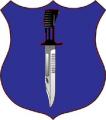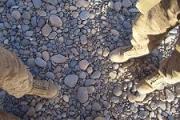I am currently out at the Marine Corps' OIF train-up at Exercise Mojave Viper, and I'm not impressed by the current state of affairs with weapons-handling among the masses (which I am about to return to shortly).
I guess the advent of optics for every Marine's rifle now means that you can wear the rifle like a purse on the end of some $5 jacked up PX sling, with little or no regard to how the weapon dangles and bangs around your body. Heaven forbid that we should all pretend to care for our new PEQ-15 aiming devices too.
And don't get me started on the employment of clearing barrels in front of the chow hall, exchange, gym, etc. I have not observed one NCO, SNCO, or officer doing their job, which should be enforcing proper supervision of two-man clearing procedures. It's almost an afterthought by most troops to dip the barrel in, pull back the charging handle, and peek inside the chamber. For some of these cats, they haven't been around ammunition for days, so the practical task of dropping a magazine, extracting a round, etc., is totally lost. It's no wonder that negligent discharges still take lives overseas, because we are not doing the basics very well...and not many people seem to be keying in on the failure. Don't get me wrong though, folks know who's not wearing their glo-belt when not in full unifrom or PT gear. And heaven forbid you should be caught without a water source.

Ken, you'd probably have blown a blood vessel by now. The basics aren't happening right now, and I've come close myself.














Bookmarks